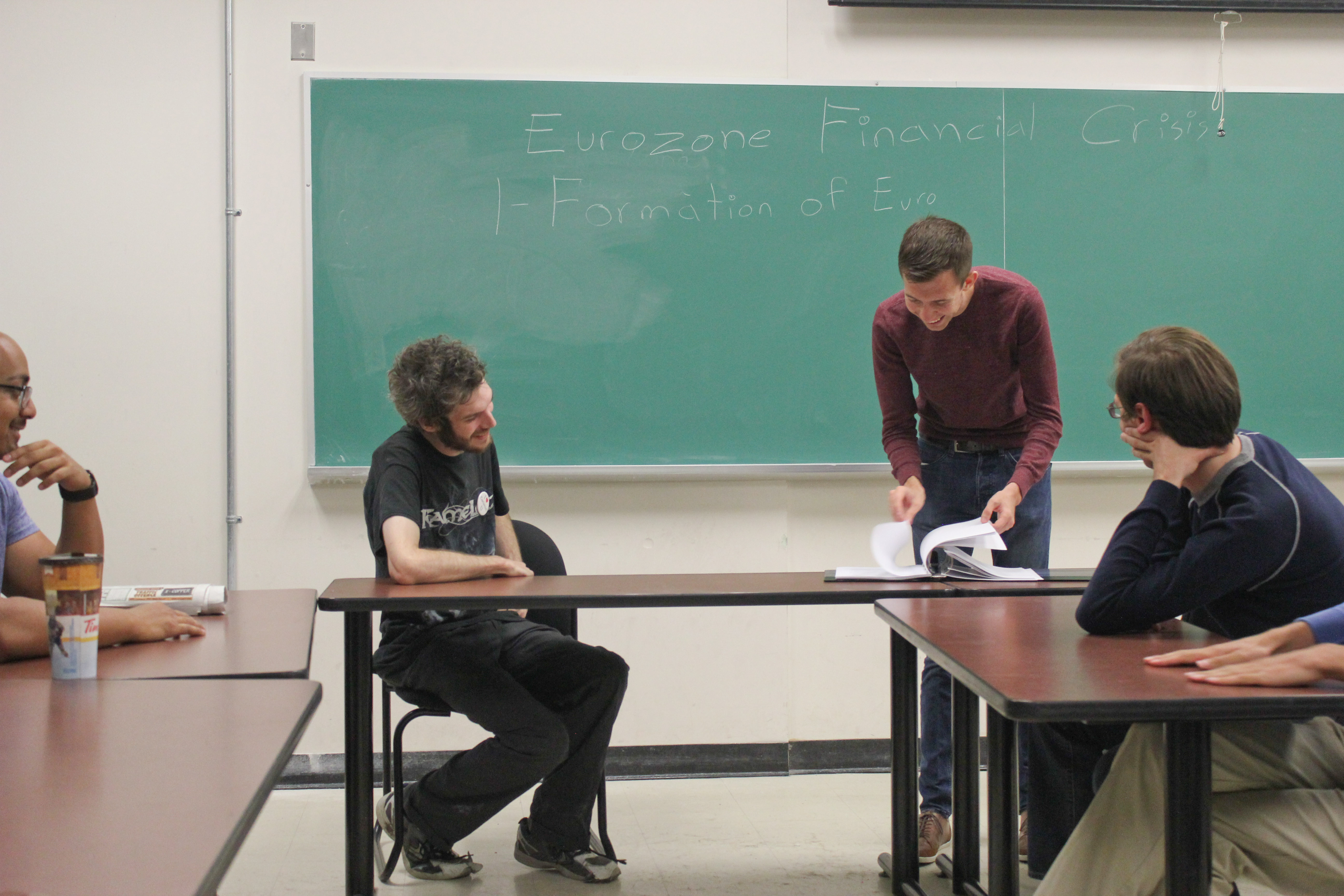Courses at the University of Toronto (U of T) are flipping teaching upside down by asking students to watch lectures at home and come to class to discuss rather than learn the content.
U of T professor Mairi MacDonald uses the “inverted” teaching method in her second-year international relations class.
Less like a traditional lecture and similar to a seminar, the flipped classroom model puts the onus on students to do most of their course’s factual learning outside of class and to come to their in-class meeting time ready to discuss the new information.
“I like to teach by asking a lot of questions,” MacDonald said. “This way, I get to provide some background and explain the questions that I’m asking. Then the students get a chance to ask questions in return.”
A growing number of post-secondary instructors have been using variations of this teaching style for years, according to Clare Brett, a professor at U of T’s faculty of education and an expert in online learning. Brett uses the inverted model in her teacher’s school classes and has never taught a class using traditional lecture-style methods.
“There is not a single model,” Brett said. “There are many different implementations of this general flipped approach, and, like all teaching and learning situations, how effective it is depends upon how well it is implemented.”
While an effective flipped classroom requires the professor to dedicate a lot of time and energy to lesson planning, MacDonald said students are also expected to be more proactive than they would in a traditional lecture-style course.
“[This model] is really demanding,” MacDonald said. “Students are required to concentrate on a recorded lecture of about an hour’s length, then they’re still required to go to class and talk about what they understood and ask questions about what they didn’t.”
Carlyn Ferrede, a first-year cognitive science student at Carleton, said although she can see why the flipped classroom method would be enticing to some students, she doesn’t think it would work for her.
“As a student who is easily distracted and prone to procrastination, I can see myself finding it difficult to focus on work and putting it off,” Ferrede said. “I need a set schedule to follow and a learning environment free from distractions.”
MacDonald said some of her students said they didn’t like the flipped classroom structure. In response to this, she said she’s taken steps to ensure the model works for a variety of learning styles by adding visual, audio, and hands-on components.
The flipped classroom model is based on the teaching theory that students learn more effectively when they can actively process ideas and think about them in different contexts, Brett said.
Brett said universities, including research-intensive ones, are now looking at improving learning methods for students. Brett said the inverted method can become popular.
Despite its challenges, MacDonald said she’d like to flip other courses in the international relations program.
“I think students need to bring their A-game to class,” MacDonald said. “You’re not going to get a pass in the outside world if you don’t prepare and you don’t bring your game.”






